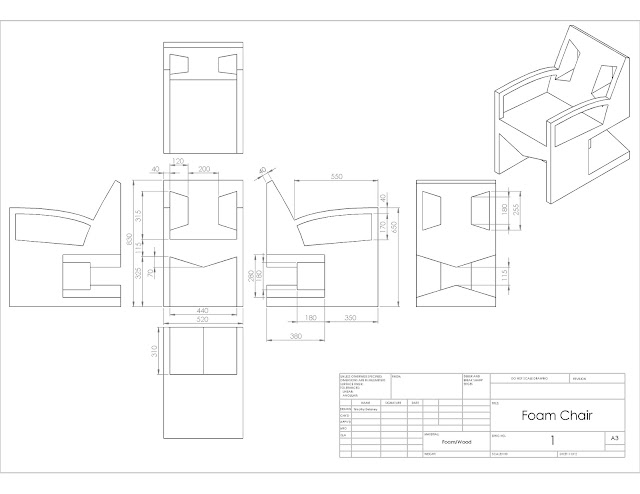The Prototype with two coats of paint and a sand.
The Model for a comparison to the final form.
The prototype having the last sections of araldite dry.
The original chair being cut up for it's required pieces.
Here are some images of my blue foam and beginings to cut it up:
The Coloured sections shown as part of the blue foam block, with the 'front half' on the top (first 400mm into the block depth) and the 'back half' being the last 200mm, the length being 2500mm of the block and height being the 165mm of the block. This attempts to visualise the 3 dimentions of the block being divided up into the sections of the chair.
The Coloured sections shown as part of the blue foam block, with the 'front half' on the top (first 400mm into the block depth) and the 'back half' being the last 200mm, the length being 2500mm of the block and height being the 165mm of the block. This attempts to visualise the 3 dimentions of the block being divided up into the sections of the chair.

The Technical drawing showing the chair split up into coloured sections as part of the chair. Excess is attempted to be minimised by having the blue section in 3 parts and the yellow split into 2.

A closer shot illustrating the seperate areas to be used for the design.
The full piece of foam to be cut up












































